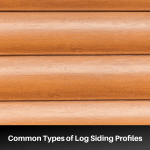When designing a home, it is helpful to consider all the possibilities for potential rooms in a house. Some rooms are general-purpose spaces that work in a variety of contexts. Others work well for specific purposes, which may suit you if you have a particular hobby or goal for your home.

Understanding the possible rooms in a house is not just beneficial for those building or looking for a new house, but it will help you to utilize the space better in your own home.
Descriptions and Names of Rooms in a House
Every home has a unique layout and style, which may not correspond to all the types of rooms listed. Open floor plans have created spaces that are more free-flowing rather than used for distinct purposes. Yet, creating distinctions by area is still an essential feature of a well-functioning home.
Foyer/Entryway

The purpose of a foyer or entry is to provide an access area into a building or home and provide a transition zone from the interior to the exterior. Because this area is the first place that visitors see, it plays an outsized role in setting the tone of your home. Whatever decor theme you choose, it is vital that you make this space inviting and functional. Consider good lighting, an interesting piece of wall art, plants, storage furniture, and a possible seat for everyday tasks like putting on your shoes. This is also the ideal space for a mirror for a quick check of yourself before you step out the door and to make the small space appear larger.
Depending on the space, you can use your entry as a storage area for everyday items like keys, shoes, bookbags, coats, umbrellas, mail, and dog leashes. Because this is also an area for greeting guests, you should limit the items in the foyer to only the ones that can be stored neatly.
Living Room

The living room often functions as the gathering space of the home. Depending on the size and layout of your home, the living room can be a formal space for entertaining guests, a hang-out space for the family to relax and watch TV, or both.
Whatever the purpose of the living room, comfortable seating is a necessity. Most living rooms feature a sofa, accent chairs, and additional seating. Many also feature storage for books, games, decor items, and toys. In open floor plans, living rooms are combined with dining or kitchen spaces. In this case, it can be helpful to differentiate the spaces by using rugs, which better define each specific area.
Dining Room

A dining room is a space that is specifically set apart for enjoying meals. Some homes will feature a specific room that is set apart for this purpose, while others combine this with a kitchen or a living room space.
Most dining rooms feature a dining table and chairs. A sideboard is another helpful item in a dining room. These work well for dinnerware storage and for serving meals for large groups.
Bedroom

Bedrooms provide a space for personal rest and relaxation. In the typical home, there might be several types of bedrooms, including a primary bedroom, children’s bedrooms, nurseries, and guest rooms.
Primary bedrooms, formerly called master bedrooms, are typically the largest room in the house reserved for the homeowner. This bedroom often includes a private bathroom with a walk-in closet. Children’s bedrooms are designed for their comfort and pleasure. They often feature other elements like play and study spaces depending on the needs of the child. Nurseries are spaces for babies. These rooms often feature a crib, changing table, and rocking chair or glider for soothing a crying baby. Guest rooms are designated spaces for providing a comfortable refuge to accommodate overnight guests.
Kitchen

Kitchens are spaces that are primarily dedicated to the making and serving of food. But in today’s homes, they are so much more. They are a place for last-minute homework, late-night conversation, and before and after party gatherings. Kitchen shapes vary by home size and design, but there are six common kitchen layouts: galley, L-shaped, U-Shaped, island, peninsula, and one wall kitchens.
Each kitchen type varies in the amount of counter space, open area, dining space, and workflow. When you are looking for the most advantageous kitchen design for you, it is important to choose a kitchen design that is attractive and uses the space well but will also enhance the efficient running of your home.
Bathroom

Bathrooms are equipped with toilets, sinks, showers, and bathtubs. Most homes feature several types of bathrooms. Half bathrooms, also called powder rooms, are rooms with just a toilet. These bathrooms are common in spaces used by guests. Ensuite bathrooms are part of a primary suite connected to the primary bedroom and closet. Jack and Jill bathrooms are a common bathroom designation. These bathrooms connect two rooms and are meant to serve the occupants of both rooms.
Home Office/Study

A home office, or study, is a space that is set aside for work or quiet reading and reflection. Some homes have a designated space for a study, but many homes combine a home office with another room, like a guest room or even a living room or dining room.
Depending on your available space and work needs, a separate home office/study might be useful in increasing your work concentration and efficiency. Home offices are equipped with a desk and desk chair. Other useful furniture items are storage options like bookcases and file cabinets to help keep your space organized.
Laundry Room

Laundry rooms are functional spaces equipped with a washing machine and dryer. They are meant to provide a designated space for caring for clothes and house linens. Depending on the available space, you can increase the efficiency and utility of this room with the addition of extra storage, a utility sink, and additional countertops.
Pantry

A pantry is a storage area, often located next to the kitchen, for storing food and other kitchen supplies. The dimensions of a pantry will vary according to available space in the home. Common pantry types include walk-in, corner, and reach-in pantries. Pantries are useful in every kitchen but are most useful for small kitchens to increase storage space. Pantry spaces can help to increase the efficiency and organization of every kitchen.
Playroom

A playroom is a defined space where children can play and learn. While many people combine this room with a living room or a child’s bedroom, a designated playroom is useful in a family with small children. When the spaces are separated, you can craft a space with fewer distractions and better boundaries that are more clear to a small child. You can also organize a room better when it has a specific rather than dual purpose.
Mudroom

A mudroom is a space that is located near the entrance or garage of a home. This space is meant to store outdoor clothing, shoes, and accessories. The purpose of a historic mudroom was to keep dirt in the form of muddy clothing and shoes away from the rest of the house.
Modern houses may not have these same needs, but modern mudrooms often contain cubbies and cabinets that can help keep other interior rooms more organized.
Home Gym

A home gym is a space that has been designed to help you exercise more conveniently in your home. A home gym provides many advantages over public gyms; they are more private and allow you to exercise on your own schedule.
These rooms are often equipped with workout equipment like treadmills, yoga mats, stationary bikes, and weights. It is important to consider your own exercise goals when setting up a home gym, as this equipment is highly customizable.
Conservatory/Sunroom

A conservatory or sunroom is a space that is enclosed with glass walls to allow in sunlight and provide a broad view of the outdoors. These rooms have the advantage of making you feel like you are outdoors while still providing you with protection from the elements.
Historic conservatories were used to protect plants and to grow plants that were not in season. People today use conservatories and sunrooms for a variety of purposes, from growing plants to providing another space for relaxing and dining.
Library

Home libraries are places for storing and reading books. This is one of the types of rooms that is not common in modern households, but in historic homes, this room was a sign of your wealth and refinement.
Home libraries are useful for people who have large book collections. Depending on your house layout, many people combine libraries with home offices for more efficient use of space.
Wine Cellar

A wine cellar is a designated space for storing wine. Wine requires specific conditions for storage, including darkness, low activity, and specific air quality. Wine cellars provide the consistency necessary for optimal wine storage.
Wine cellars are useful for the serious wine collector who wants to protect their investments in wine and age it to increase its value over time.
Home Theater

A home theater is a room in the home that is equipped to recreate the experience of a movie theater. These rooms provide plush theater seating, a large screen, ambient light, high-quality sound and audio.
These rooms vary by size and complexity. Some have just a large-screen TV with comfortable seating. Others have fully equipped theater systems with decor themes that replicate movie styles. Home theaters are not just popular with movie lovers but also sports fans and gamers who want to create an immersive viewing experience.
Basement

A basement is a space below the main level of the house. The basement space can mirror the upper level or can just be beneath a portion of the home. Basements can be fully underground or partially exposed on one side of the house.
Basements are useful for providing extra storage or living space. They also help protect the main area of the home from extreme weather. Basements also come with challenges. They are subject to mold and mildew if they are in complete darkness. Basements can also be difficult to ventilate and keep dry.
Attic

An attic is a space directly under the roof of the house. This is a space that many people use for storage, but you can also use it to expand your living space.
In order to make this space more usable, it is often necessary to add extra insulation, increased ventilation, greater structural support, and heating and cooling systems. When finishing an attic, some people prefer to cover the rafters, but others like the rustic look that rafter ceilings provide.



